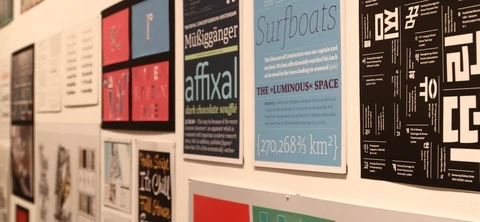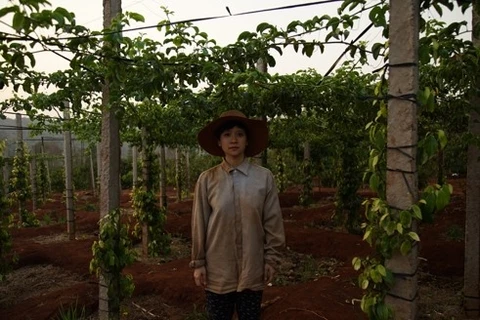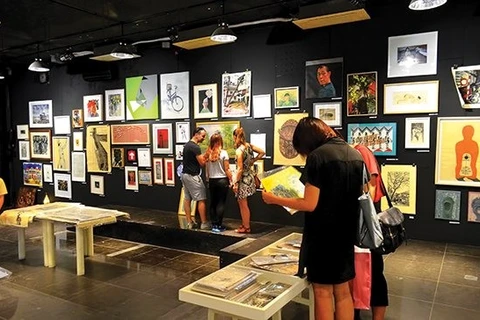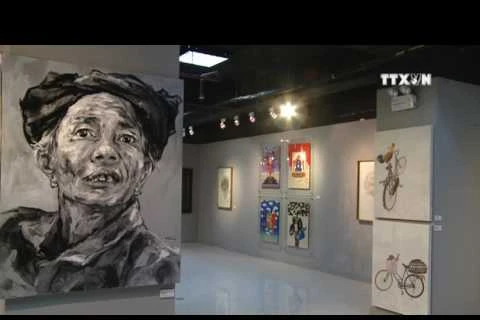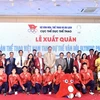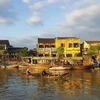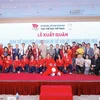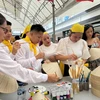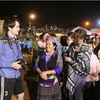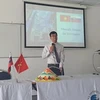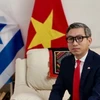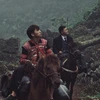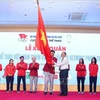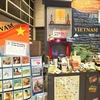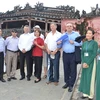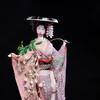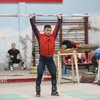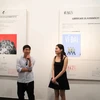Hanoi (VNA) - Established artist Pham Khac Quang is showing his latest paintings which were created using a relief printing technique at an exhibition launched recently in Hanoi’s Goethe Institute.
The 11 landscapes and portraits were created in 2015 and 2016 after nearly 20 years in which Quang has been involved in traditional woodcut. Three landscapes are particularly eye-catching with their size - 144cm by 240cm. The paintings depict scenery typical of northern, rural Vietnam.
"I want to recall happy memories with my late beloved wife in our native homeland in Hai Duong," said Quang.
He also captures images of a garden corner; a river bank and early morning in his home province.
"It is a chance for me to introduce artworks which bring a new visual effect," the artist said. "At present it is not easy to recognise boundaries between art genres. If an artist does not specify, viewers will not know which media he uses to create his work."
Born in 1975 in the northern province of Hai Duong, Quang graduated graphics studies at the Vietnam Academy of Fine Arts. He used to paint oil-on-canvas but soon realised the medium did not suit him.
"I earn money from oil-on-canvas paintings, but I don’t feel happy because my creativity depends on the gallery owners," Quang said. "After that I centre on traditional woodcuts which are close to what I studied - graphics."
Quang has won awards including silver medals at the Vietnam Fine Arts Exhibition and ASEAN Graphics Exhibition. He has also exhibited in other countries, including solo graphics installations at Denmark’s Aarhus Culture Centre in 2013 and a group exhibition in the Fine Arts and Ceramic Verviers Museum in Belgium.
Quang was also artist in residence at the Fresh Wind Festival in Garour, Iceland in 2012.
Although he has been recorgnised and gained success, Quang sought a change. In recent years he has experimented with relief printing techniques using drilling machines to cut circular holes into a printing plates.
This technique works with multiple colours, but only one printing plate. After one colour, the plate is further processed and the next colour is applied so that more and more of the printing plate is removed. Some of the works can only be recognised from a distance.
"Quang’s creativity is interesting. He uses daily utilities to make artworks," said Wilfried Eckstein, Hanoi Goethe Institute’s director. "Pixel art was popular in the 1980s with two leading artists - Andy Warhole and Ferdinand Pencker. Quang’s technique is refined and is a development of pixel art. I really admire his idea."
On February 25 at 3pm Quang will demonstrate his technique at the exhibition, using his own materials and tools. Visitors will then be able to create their own prints with Quang’s guidance. The artist’s materials and tools are also on display at the exhibition.
The Hinh Cua Tron (Shape of Round) exhibition will run until March 5, from 9am to 7pm, at 56-58 Nguyen Thai Hoc Street, Hanoi.-VNA
VNA

